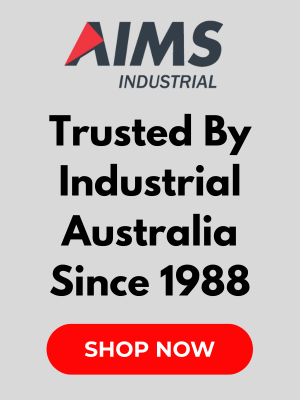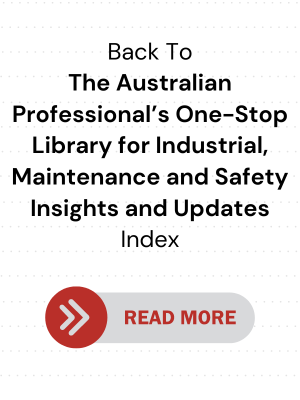Glossary of Industrial Terms and Acronyms

A B C D E F G H I J K L M N O P Q R S T U V W X Y Z
A
A/F: Across Flats, refers to the distance across the flats of a hexagonal fastener head (like a bolt or nut) that a spanner (or wrench) will fit onto (eg an M8 bolt typically requires a 13mm A/F spanner). We've compiled a spanner size chart here for your convenience.
Abrasive: Any object or substance used to grind, lap, polish or smoothen another material to get rid of undesirable components in its surface
ADG: Australian Dangerous Goods (Dangerous good vs hazardous substances -- what's the difference?)
Adhesive: A substance used for attaching things together, usually permanently
AIG: Australian Industry Group
Allthread: Also known as threaded rod or brooker rod, this is a general purpose fastener with threads running its full length without a head on either end
Alloy / Super-Alloy: A substance composed of metallic elements (usually aluminium, nickel, chromium, magnesium and molybdenum) dissolved and melded together to form a new metallic product. Higher-performance versions are known as "super-alloys".
Aluminium: A lightweight, silver-white metallic element that is ductile, malleable and resistant to oxidation and tarnishing
AMSA: Australian Maritime Safety Authority
ANSI: American National Standards Institute
Anti-Seize Compound: Also called anti-stick or 'never seize' compound, it is a substance used to protect fastened interfaces from corrosion, sticking and galling
Assembly: The process of putting together complex devices, machineries and mechanisms from various parts
B
Bearing: A mechanical element designed to minimise friction between moving parts and promote smooth movement; generally consist of rolling elements in between an outer and inner ring (called races)
Belt: A band of strong, flexible material for moving items or transmitting motion and power
C
Calibration: The process of measuring devices and instruments against a tool to ensure accuracy, stability and consistency of output
Camlock: Also known as cam and groove coupling, is used to connect pipes and hoses to enable fluid transfer from one place to another
CBU: Completely Built Up. A product that has been fully assembled prior to transporting and so requires no further assembly upon delivery. An example would be a Mercedes-Benz sedan directly imported from Germany as a fully built car to be distributed, marketed and sold to the Australian market with no local assembly and parts involved in the process at all.
Circuit breaker: A device for automatically or mechanically interrupting an electric circuit when abnormal operting conditions are detected, to prevent causing damage to the apparatus or igniting fire
CKD: Completely Knocked Down. A product that is shipped as parts and therefore requires assembly upon delivery. An example would be an Isuzu truck with parts imported from China, Thailand and Japan and locally assembled and sold to the Philippine market.
Countersinking: The process of boring a conical shape (in a piece of material) at the end of an already drilled hole to allow a countersunk screw to sit flush with the material, giving a smooth finish
D
Dead centre: The position of the piston (in an internal combustion engine) relating to when it is farthest from (TDC = top dead centre) or nearest (BDC = bottom dead centre) the crankshaft
Deburring: The process of removing burrs and rough edges from parts and surfaces by tumbling, sanding, grinding and other similar methods
Drilling: A machining technique that involves the use of a rotating drill bit to bore a round hole in a surface
E
Equipment: Any single item or a collection of related items that is/are provided or meant to be used for a specific purpose
F
Fastener: A component or device used to firmly and securely join two objects, thereby creating a non-permanent/semi-permanent attachment/joint that can later on be dismantled without causing damage to either object
G
Gasket sealant: A chemical compound used in conjunction with gaskets to create a tight seal between two surfaces
Grease: A semisolid lubricant made of synthetic or natural base lubricants and thickening agents that are formulated to lower the friction between moving parts and to prevent the entry of water into the system
Grommet: Commonly referred to as eyelet, it is a ring-shaped insert placed in holes, and is generally used to cover sharp edges and protect the materials that pass through the hole
GST: Goods and Services Tax
H
Hazardous area: A location, place or vicinity where the environment is either alleged or confirmed to have a presence of a chemical spill, dangerous material, explosive element, radiation or a similar substance.
I
Inventory: A part of supply chain management, which help make sure the business has the right products in the right quantity for sale, at the right time. (View best practices in inventory management.)
ISO: Intenational Organization for Standardization. An international, non-government body which is made up of country-based standards organisations that aim to mutually develop practical, international standards.
L
Lathe: A machining tool used to hold and rotate a piece of material around its axis, such that the operator can perform various actions (eg. cut, sand, drill etc) on the material
LOTO: Lock Out Tag Out. A safety procedure to make sure that dangerous devices are properly shut down and cannot be restarted until maintenance or repair work is completed.
Lubricant: A solution formulated to reduce friction and wear between surfaces in motion
M
MRO: Maintenance, Repair and Operations
MRP: Material Requirements Planning
MVP: Minimum Viable Product. A product, in early development, which is sufficiently appealing to early adopter customers as to allow for validation of the product concept early in the product development cycle.
O
OE: Original Equipment. A product that is manufactured by an OEM, often without any branding so a third party can market, sell or use it as a component of an assembly.
OEE: Original Equipment Equivalent. A product that is manufactured (not necessarily by an OEM) and often branded as an "aftermarket" product to serve the same purpose and have the same quality as that of an OE.
OEM: Original Equipment Manufacturer. The manufacturer of a product that a third party may market, sell or use.
Off-the-shelf: An item purchased from a supplier in its original state and used "as is", with no changes made.
P
PCBU: Persons Conducting a Business or Undertaking
PPE: Personal Protective Equipment. A product (or set of products) worn by a person to reduce the risk of diseases and injuries. Examples are ear muffs, gloves, goggles and masks.
Pulley: A device, usually round and in the form of a wheel, on a shaft designed to transfer power (more accurately, torque) from the motor to a belt or chain. Sometimes referred to as a sheave.
R
Retaining ring: Fastener designed to prevent mating parts from excessive movements during operation, and is a thin circular metal component fitted in external or internal machine grooves to secure parts in position and to reduce vibration
S
SDS: Safety Data Sheet. A document that specifies essential information about potentially hazardous substances and health hazards. In Australia, businesses, specifically manufacturers and importers, are expected to use SDSs to assess the risks of hazardous chemicals in compliance with work health and safety (WHS) standards. This is different from Material Safety Data Sheet (MSDS).
Shims: Also called spacers, these are thin strips of metal or plastic used to fill gaps between objects to componsate for leveling issues
SKD: Semi-Knocked Down. A product that is shipped as "substantially complete" but still requires local assembly. An example would be Renault unibody, engine and computer parts imported from France to be assembled, distributed and sold in Malaysia with some Malaysian-built components.
SKU: Stock Keeping Unit
Spring: A device made up of coiled lengths of steel used to provide compressive, torsion or tensile force
Sprocket: Also known as sprocket-wheels or chain wheels, sprockets are mechanical gear wheels that engage chains to transmit rotation. They have teeth or cogs that are designed to interlock with power transmission roller chain to transmit power between shafts.
STAMP(S): Size - Temperature - Application - Media - Pressure - (Speed). An acronym commonly used to identify gasket and seal requirements.
STAMPED: Size - Temperature - Application - Material - Pressure - Ends - Delivery. An acronym commonly used to identify hose or fitting requirements.
T
Tolerance: The minimum and maximum allowable deviation/variation of values from a certain standard
Tool: A portable apparatus, device or instrument designed to assist in performing a task
U
U bolt: A piece of steel rod with threads on both ends and bent in a letter U, whose curved structure makes it an ideal solution to fasten tubular pipes
UOM: Unit of Measure
W
WHS: Work Health and Safety. Previously referred to as occupational health and safety (OHS). (More on WHS laws and statistics in Australia)
White-labelling: The act of branding a product that is actually manufactured by a third party (which is often an OEM), such that the product appears to be made by the company whose logo appears in it. Some people refer to it as "rebadging". An example would be a radio console with a Toyota logo on it, but that is actually manufactured by Panasonic.



.png)
.png)